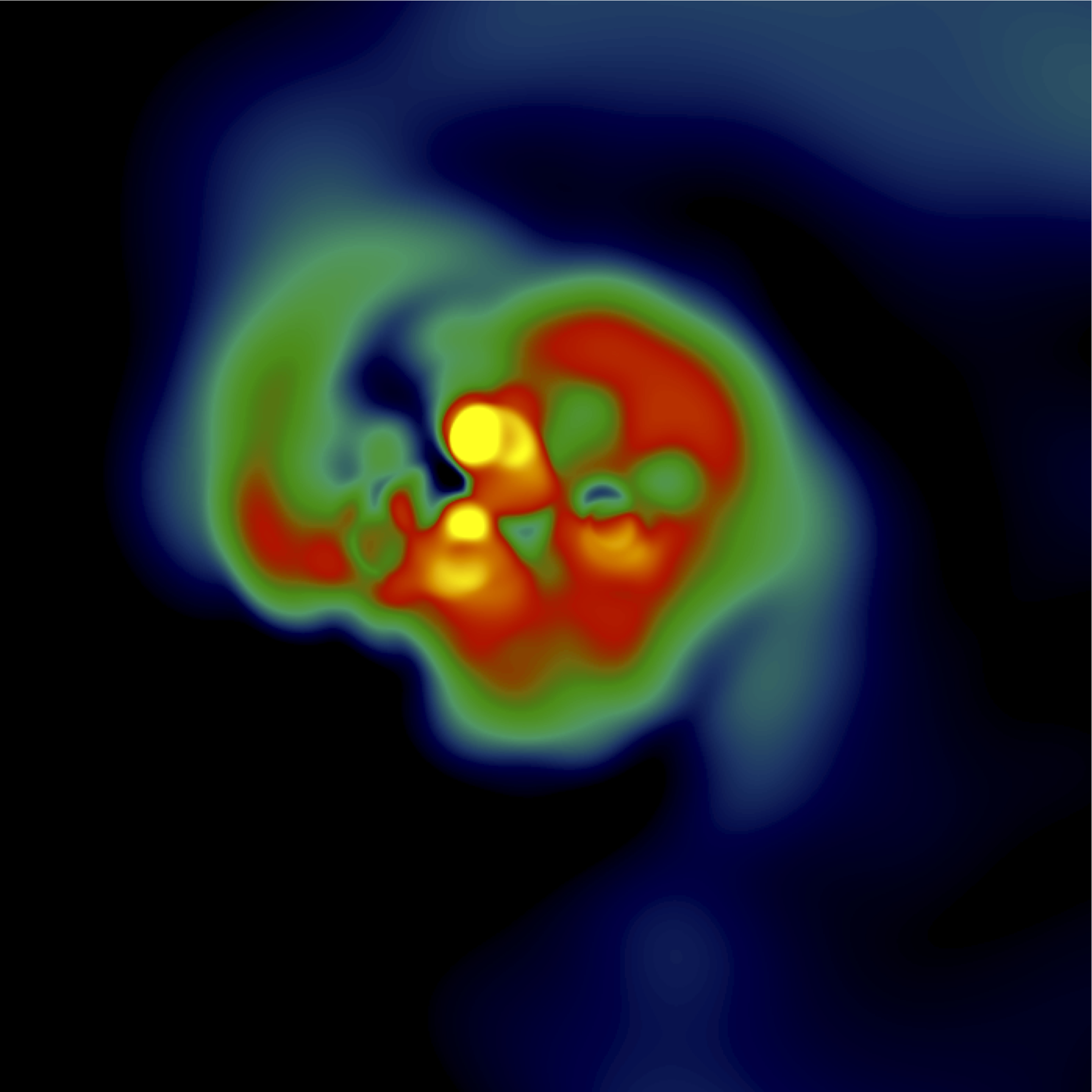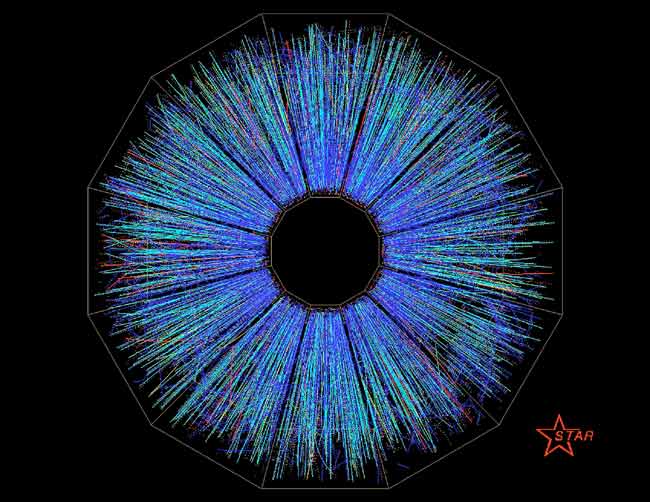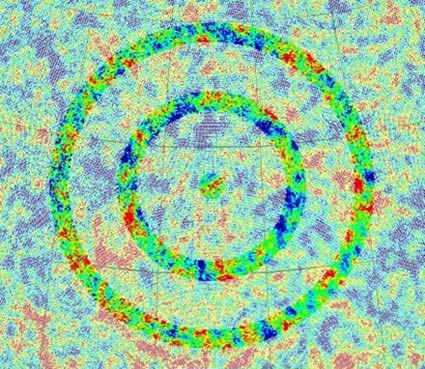Images: Peering Back to the Big Bang & Early Universe
First Stars in the Universe Were Fast Spinners
This image depicts a simulation of the formation of the first stars showing fast rotation. These stars, which researchers called "spinstars," formed right after the Big Bang 13.7 billion years ago and were likely massive giants, with eight times or more the mass of our sun, according to a new study in 2011.
CERN's Large Hadron Collider Creates Conditions Moments After Big Bang
Researchers calculated the weight of an antiproton, a finding that could shed light on the puzzle over what happened to all the antimatter that was created in equal proportion to matter in the Big Bang. Here, tracks of particle collisions in CERN's Large Hadron Collider, create conditions simulating those just moments after the Big Bang.
Mini Big Bang Created, Puzzling Results Too Explosive
Two gold nuclei collide in the center of this image, perhaps creating a new state of matter called the quark-gluon plasma, thought to have been the state of the universe a microsecond after the Big Bang. The lines spreading out from the center are the paths of the resulting shrapnel, as recorded by the STAR detector at the Relativistic Heavy Ion Collider of Brookhaven National Laboratory in 2005.
Controversial Study Suggests Our Universe is One of Many
Some researchers think concentric ring patterns in measurements of the cosmic microwave background are evidence of a universe that existed before our own was born in the Big Bang.
It took quite a bit more than seven days to create the universe as we know it today. SPACE.com looks at the mysteries of the heavens in our series: The History & Future of the Cosmos. This is Part 2 in that series.
Breaking space news, the latest updates on rocket launches, skywatching events and more!

Space.com is the premier source of space exploration, innovation and astronomy news, chronicling (and celebrating) humanity's ongoing expansion across the final frontier. Originally founded in 1999, Space.com is, and always has been, the passion of writers and editors who are space fans and also trained journalists. Our current news team consists of Editor-in-Chief Tariq Malik; Editor Hanneke Weitering, Senior Space Writer Mike Wall; Senior Writer Meghan Bartels; Senior Writer Chelsea Gohd, Senior Writer Tereza Pultarova and Staff Writer Alexander Cox, focusing on e-commerce. Senior Producer Steve Spaleta oversees our space videos, with Diana Whitcroft as our Social Media Editor.




